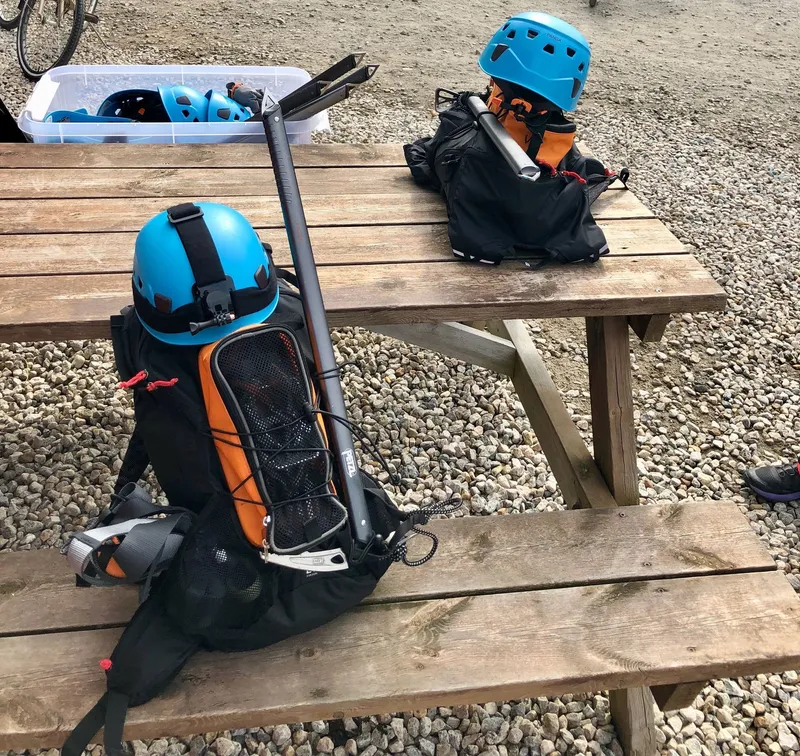We’ve been doing lots of hikes all over the world, in both hot climates, like in Australia, and extremely cold climates, like Iceland. Over the years experience taught us what we need on each type of hike and in the last couple of years we missed nothing. The hiking gear list in this article is based on our own hiking equipment. Each individual has his/her personal needs, so feel free to add to the list personal requirements if you have any.
First Aid Kit
You might be tempted to not carry a first aid kit. It is very unlikely that you are going to use it, it takes space and it adds a few hundred grams to your backpack. We’ve done tones of hikes without a first aid kit (shame on us). Not because we didn’t want to carry one, but because we were not aware that this is really a thing. It sounds stupid now that I am writing this, but we never needed one and we never heard of anyone ever having or using one.
Don’t get me wrong. It’s not like we knew about having a first aid kit while hiking and we didn’t want to carry one. We simply never thought and never heard of it. Until one day when I wondered why did someone have sterile gauze with him in his backpack. I’m glad he had because that guy injured his head during an earthquake. And I’m happy it wasn’t us on that mountain that day because we had no first aid kit. Since then we have never gone on a trail without a one. You can find the full story of the guy that hit his head, and what your first aid kit should contain in our previous article dedicated entirely to this subject.
Hiking Gear and Equipment
Depending on the hiking conditions, the gear you wear and carry with you will vary. Even so, some of the items you need with you remain the same. Let’s start off with the standard backpack contents for any hike:
- Clothing
- Weather Dependent
- Extra Layer
- Change Clothes
- Optionals
- Bear Whistle
- Bear Spray (if legal)
- Gas Mask (if hiking to a volcano)
- Quick dry towel
- Swimwear
- Equipment
- Sturdy Shoes
- Backpack
- Backpack Rain Cover
- Hiking Poles
- Trash Bag
- Sunglasses
- Sunscreen
- Headlamps
- Map
- GPS
- Electronics
- Water Bottle / Thermos
- First Aid Kit
- Food
- Snacks
- Dehydrated Food
- Pocket Multi-tool
- Spoon / Fork
- Hot Water
- Sandwiches
- Fruits
- Sweets
- Rehydration Tablets
Hiking Clothing
Change Clothes
Most good hiking clothes are specially designed to dry out quickly. Even so, there are times when you wish you had a t-shirt, a base layer or a fresh pari of socks to change the wet ones when you finish the hike.
An extra layer
Even in hot weather, hikes at high altitudes may expose you to some big differences in temperature. Never forget to take with you an extra layer according to the weather conditions you are hiking in.
Hiking Equipment
Backpacks
You can use one backpack for any kind of weather, but there are few things to consider. This topic is so long and important that we have written an entire article about how to choose your hiking backpack.
Some backpacks come with a rain cover included, others don’t. While a rain cover is not a must-have for every hike, it is good to have one on most hikes. It’s not heavy and you will regret not having one if it rains.
Water Bottles
In most places in the developed world, you will not have to buy bottled water. You can drink water from the tap, from public water dispensers, springs, and even rivers. For this, you need to have with you reusable bottles (not plastic ones).
Insulated or not? If it’s very cold or very hot, we recommend getting an insulated water bottle. However, we choose the single wall water bottles whenever possible. The biggest difference between the 2 types of bottles that we pay attention to is their size, capacity, and weight. Since the insulated bottle has a double wall it is obvious that for 2 bottles that are the same size, the insulated one will have a smaller capacity and will weigh more than a single wall bottle. In other words, you have to carry more for less water. Even so, don’t forget that you need to keep your body warm or help it lower its temperature to avoid heatstroke and dehydration. The bottles that we are using are as follows:
- Insulated water bottle: Hydro Flask.
- Single wall water bottle: Mizu.
We are very happy with both bottles. They are high quality with good paint, and also lightweight. We also received a Sigg insulated bottle from Airbnb because of some trouble we had with their website when trying to make a booking. The Sigg bottle is bigger in size and heavier than the Hydro Flask, although it has a smaller capacity. It does seem to hold the temperature for a longer period of time though. However, the Sigg bottle had an integrated system for tea infusion that rusted in a few months which is disappointing.
UV Bottle? During some hikes, you might get water from rivers or springs. If you can’t be 100% sure of the quality of the water that you drink it’s better to have a way to kill some of the bacteria and microbes that might be in it. Using a bottle with UV light is the easiest and most convenient way to do this. UV bottles are also recommended if you travel in countries with underdeveloped infrastructure. We currently have a Larq bottle, we used it for almost 2 years and the paint on the cap started to exfoliate/corrode. We’re going to buy another UV bottle soon and we are looking at Philips GoZero.
Hiking Poles
We are very sure-footed and in good fitness condition so most of the time we underestimate and ignore trekking poles because they can be annoying sometimes. We will go into more details about this subject soon in a different article. Long story short, they are useful especially for long-distance hikes allowing you to go faster and be less tired. They can also be annoying, so don’t push yourself to use them every time.
The most important features when choosing your hiking poles are:
- Adjustable length and collapsibility. We both have trekking poles made of 3 segments so that we can easily store them on our backpacks. In addition, this allows us to easily adjust the length of the poles as we need them.
- Weight and durability. These 2 features come together because of the materials that trekking poles are made of: aluminium and carbon fiber. Aluminium is more durable but heavier than carbon fiber. For this reason, Diana, as a woman, has carbon fiber poles, while Stefan has aluminium ones.
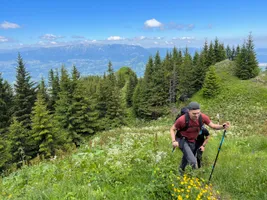
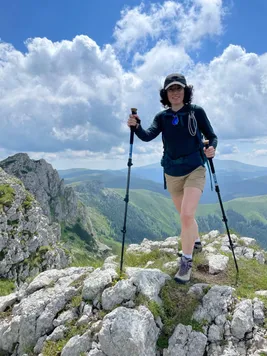
The trekking poles that we have are around 5 years old and we were not able to find them online anymore to give you a link to them.
Headlamp
Headlamps are a must on every hike even if you don’t plan to go in caves, hike by night, or overnight camping. You never know what happens on the trail and you end up hiking in the dark. Go for the rechargeable headlamps to avoid wasting money on batteries that are also harmful to nature. We also recommend them to be waterproof because you never know when the rain starts.
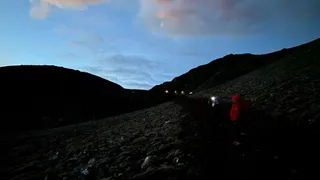
Trash bag
It doesn’t sound like much, but not having a trash bag with you will prove annoying. You don’t want to get your backpack or other things dirty from your food waste, like banana peel. A trash bag will help you collect and store your garbage in a safe way.
Sunglasses
I used to hate sunglasses. While you can get rid of most problems and discomfort you have with sunglasses by buying the right pair, you can’t fix our most puzzling problem: you will no longer see nature as it is with its true colors. So many times you want to admire the landscape perhaps the turquoise color of the sea, the emerald color of a glacier lake, or the multitude of colors that the lava in Iceland might have.
At the end of the day, we realize that not wearing sunglasses in bright light only makes you more tired and makes it impossible to see as many places as you could if you were less tired. We use 2 different types of sunglasses, depeding on the environment.
For glacier hikes, and polar expeditions where everything is white and bright we use the Julbo Explorer 2 glasses with Reactiv High Mountain 2-4 Photocromatic, Polarized lens, also known as camel or cameleon lens.
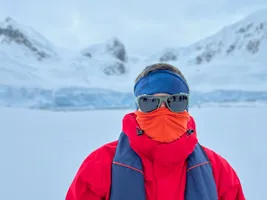
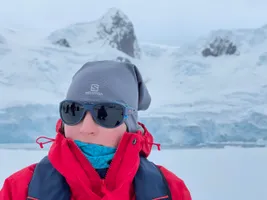
For regular hikes, we tend to use our every day sunglasses. We tested some brands over the year like Ray Ban, Oakley, and Maui Jim, and we both prefer the Maui Jim sunglasses, especially with the Hawaii Blue Polarized lenses. I use the Maui Jim Maveriks Aviator, and Stefan uses Maui Jim Red Sands.
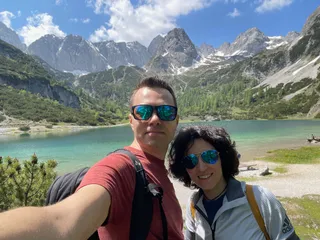
Sunscreen
While hiking, you will spend a considerable amount of time in the sun. Even if the sun is not strong, it might still burn you. Hiking makes you very vulnerable to sunburns, because most hikes are in the mountains, where the air is cooler, but the sun is stronger. You risk to get sun burn without feeling it. When hiking, we prefer to stay safe and use SPF50 sunscreen from Altruist.
Map
Physical maps are so underrated and we easily turn to the display of our phones for navigation. However, your phone may run out of battery or cellular service and leave you without a map. Not to mention all the benefits that being in nature, away from the daily devices has. Using a paper map instead of your phone will empower you to emerge even deeper into the beauty of nature. At least make sure that you have a virtual map that can be accessed offline.
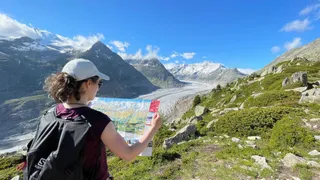
Electronics
Photography enthusiasts might not want to forget their camera or any other devices they use for their jaw-dropping photos. Together with them, a power bank is also good to have.
Handheld GPS hiking device
If you are dealing with trails that are known to lack cellular service and that are poorly marked, a handheld GPS device specially designed for hikes is a useful piece of device that might save your life.
Food
The food you carry with you will be different depending on the weather conditions. Even so, food is so important that we couldn’t skip it when talking about common hiking gear.
Besides full meals, it is also good to have with you some caloric snacks because you will burn a lot of calories during a hike and you need the energy to get to the end. Some of the best hiking snacks are beef jerky and nuts. Both are rich sources of proteins that support your muscles. You might also want to get something sweet for a quick boost of energy or even better, a fruit. And last but not least: bananas. Bananas are well known for their importance during high-intensity sports. Their mineral content and easy-to-digest carbs will give you a boost of energy and relieve some of the muscle cramps and soreness.
Spoon, fork, knife
This is not a must in every hiking backpack, but it greatly depends on what food you take with you. In case you can’t eat your food with your bare hands we recommend you get an all-in-one piece of cutlery from Light My Fire. They are so practical and we love them. Unfortunately, we forgot ours at an accommodation, but we are going to buy exactly the same type we had.
Pocket Multi-tool
The multi-tool is a must in our opinion. We used it more times than we can count, from opening tin cans and cutting fruits to opening bottles of wine or beer at the end of a hike. It is also useful if you need to use the first aid kit to cut gauzes (unless you have a scissor in your first aid kit).
Optionals
Depending on the location and conditions where you are hiking, you might find useful the items we mentioned in the optional category.
Gas Mask
Some volcano eruptions are not explosive, which makes them accessible to most people. However, the risk of dangerous gases being released by the volcano is extremely high. For this reason it is advisable to carry with you gas masks.

Bear Horn, Whistle & Spray
Many beautiful hikes are in bear territory. This doesn’t have to scare you off, but you need to know some basic rules about hiking in bear territory, and to carry some basic bear defence equipment with you.
Bear horns and bear whistles are the most common and recommended items. Their purpose is to scare away any bear that might be close to you before you meet each other. Official recommendations say that bears will usually avoid people and unfamiliar noises. Therefore, making noise is the best defence against bears. The bear horns are lowder, but have a limited number of uses per recipient.
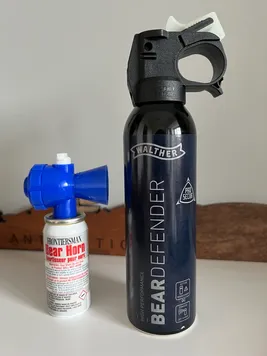

Once you encounter a bear, noise is not longer efficient. For bear encounters, a bear spray is probably the best way of defence. While on the trail, you should carry the bear spray easily accessible, ideally in belt accessory. The bear spray is not the same as a self-defence pepper spray. The bear spray is stronger and it comes in bottles of at least 200ml.
Important Note: In some countries bear sprays and self-defence sprays are illegal. It is also illegal to cary a bear spray on any air plane, including in the checked luggage.
Quick dry towels
Quick dry towels are not a must for every hike. You have to know your hike beforehand to decide if you need a towel or not. Hikes that you should take a towel are those that pass by or end on a beach, those where you have to cross a river barefooted (and if the weather is cold you will want to get dry very quickly), or those where you will bathe in thermal water like for example Reykjadalur in Iceland.
Swimwear
As you can imagine, you only need to take swimwear with you if you are hiking to a beach or passing by a beach while hiking. We did this on several ocasions, and it was a lot of fun. Those are the most secluded and spectacular beaches, away from touristy areas.
There are 2 options here: you can take your swimwear in your backpack or wear it directly. If you plan to wear it, you should make sure that they are comfortable to wear on a hike, under your clothes. We personally prefer swimwear from Rip Curl: for women Rip Curl Day Break, and for men Rip Curl 16" Volley.
First Aid Kit - Important!
I know, we talked a about it few paragraphs above, but I can’t stop emphasizing its importance. Just don’t forget the first aid kit!
Weather Related Hiking Gear
The contents of your hiking backpack will be influenced by the weather conditions. We also have an article about the gear you need for hiking in cold weather and we will write shortly another one about the hiking gear specific to hot weather.
Now that your backpack is ready, you are one step closer to hitting the trail. Make sure you are well informed about the trail you are about to start, that you have at least a virtual map downloaded on your phone.
Have fun and take care of nature!
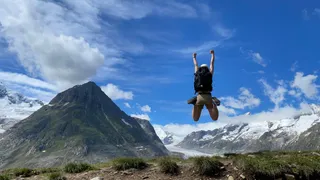
Related Travel Articles
- What You Should Know Before Hiking in Madeira, Portugal
- What Is Height Vertigo And How To Cope With It
- How to stay safe when going to see an erupting volcano
- How to Choose Your Hiking Backpack
- The Hiking Gear And Equipment Essentials for Cold Weather
- What to Pack in a Hiking First Aid Kit and Why That's Important
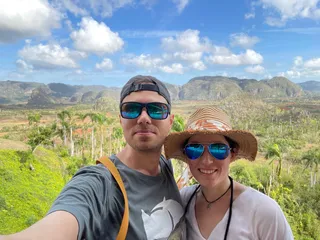
Writing free, independent and personal travel content since 2021. If you appreciate what we do, then you can return the favor by using the affiliate links below.
- Get your accommodations on Booking.com
- Buy your gear and gadgets from Amazon
- Book flights using Expedia
- Book activities on Get Your Guide
- Book guided trips on G Adventures
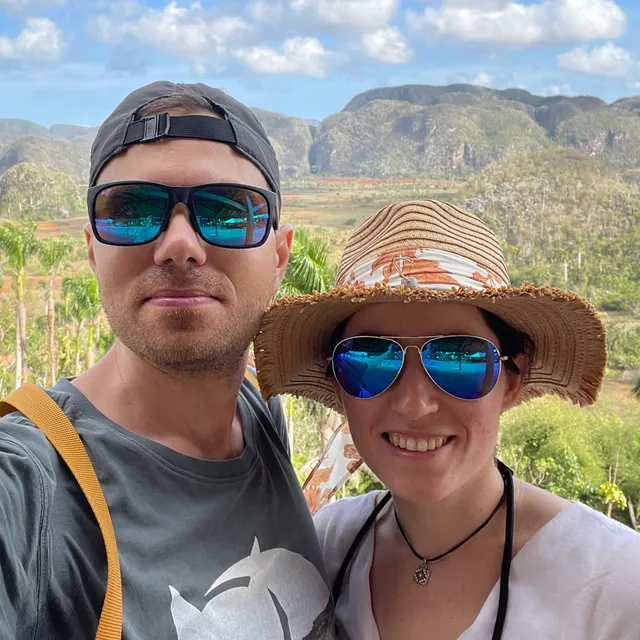
Writing free, independent and personal travel content since 2021. If you appreciate what we do, then you can return the favor by using the affiliate links below with no cost for you.
